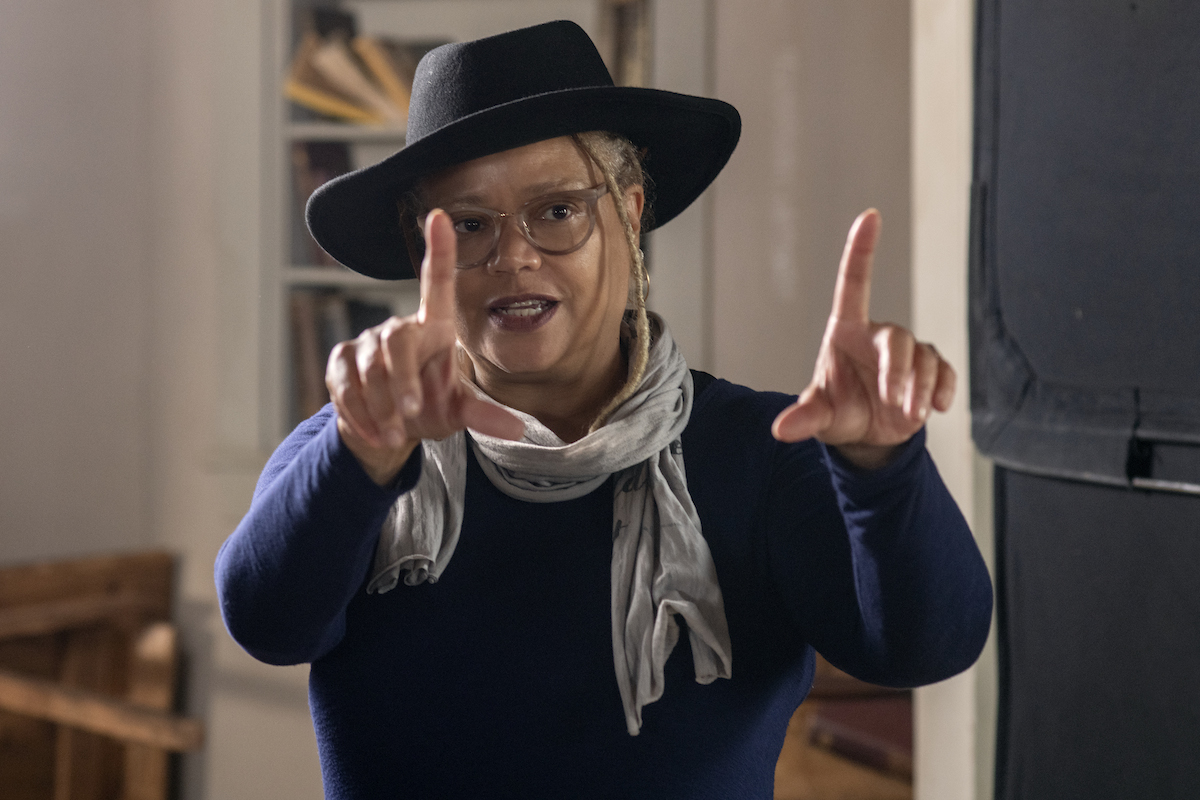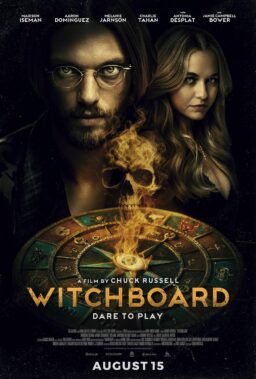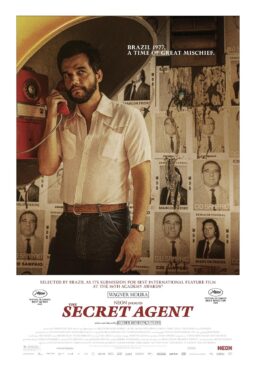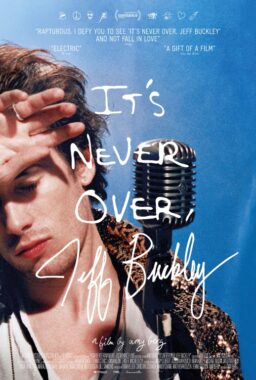A blazing Autumn sunset quickly upstaged my scheduled conversation with filmmaker Kasi Lemmons last Friday in Chicago. “Let’s take a picture!” she said, and we quickly grabbed our phones to capture a glimpse of the spectacular light show unfolding outside. There’s no question the honey-hued vista would’ve felt right at home in Lemmons’ latest feature, “Harriet,” a stirring, gorgeously lensed biopic on the trailblazing abolitionist, originally named Araminta “Minty” Ross, who courageously freed herself from slavery along with 70 others. Her involvement with the Underground Railroad and its conductor William Still is explored here in a way that is bound to engage a wide spectrum of audiences. It’s harrowing without relying on gratuitous gore, and has rousing moments of triumph likely to earn applause from viewers young and old alike. Cynthia Erivo, the Tony-winning star of Broadway’s “The Color Purple,” is remarkable in the title role, as is Joe Alwyn as Gideon, the heartless slave owner desperate to track her down.
Three years ago, Lemmons’ masterful 1997 debut feature, “Eve’s Bayou,” was screened on a pristine 35mm print at Ebertfest, and it remains one of the great moviegoing experiences of my life. If you haven’t yet seen the movie, about a young girl (Jurnee Smollett) who discovers a dark secret about her father (Samuel L. Jackson) that causes her to seek aid from a local fortune teller (the late Diahann Carroll), seek it out immediately, preferably after experiencing “Harriet” on the biggest screen possible. After we snapped photos of the sun sinking below the Windy City skyline, Lemmons and I spoke about her approach to directing actors, her embrace of meditation and her cherished memories of working with Carroll.
In tackling a figure whose life story has had a long-belated journey to the screen, how were you able to work through the expectations of others in order to find your own vision?
We knew we wanted to tell a story about young Harriet Tubman, because she is the hardest to access. We all know the picture of the old woman in the chair, and there are all these abstract stories about her heroism. What I wanted to do was take the audience right there to that moment in history when Harriet escaped from slavery and went back to liberate others. That story has action to it, and it was my goal to capture the woman to the point where you feel like you’re sitting in front of her. If you can do that not in a nostalgic sense, but in a way that feels fresh and kind of contemporary, that would be an exciting thing to watch because it would feel like she was with you. You’re observing her at this part in her life that was so incredible, where she was such a badass and so incredibly courageous. As a viewer, you want to get right next to that.
Was there an intention of making this film accessible to younger audiences?
Absolutely. I think it would be a bit of a shame to take Harriet away from young viewers, to make a Harriet Tubman movie that is boring and artistic and super-violent and very, very narrow. I really wanted to make something that a sophisticated ten-year-old could go to with their grandmother and they would have both learned something about Harriet while also being tremendously entertained.
What inspired the film’s painterly mixture of desaturated imagery—portraying Harriet’s visions—with the warm tones of John Toll’s cinematography?
I love John Toll so much. It’s great to surround yourself with artists that you respect. We talked about the look of the film a lot, and we wanted it to feel natural, honestly. We didn’t want it to be overly sentimental, we wanted it to feel natural and beautiful and big. Even though we had a limited budget, I really wanted the moviegoing experience of our Harriet Tubman story to feel big in every way. John and I talked a lot about the visions and how they should look and feel. There was a long process where we tried out different approaches, and some of the early ones were very different from how they ultimately ended up.
Our editor, Wyatt Smith, and I decided to go back to something very simple. When I was first conceiving of the visions, I was inspired a lot by seizures and how people have described them as monochromatic, though at different points, we experimented with colors that were kind of fantastical. Yet we went back to a very simple language that was unifying, since Harriet not only had visions but trances and dreams that turned out to be prophetic. We weren’t sure whether all those things should look different, so it was a process in editing and shooting where you try and decide what that language wants to be. I decided to make them all simple and kind of shocking, almost piercing in the way a seizure might be, or a flash of insight.

You have always taken spiritual intuition seriously in your films. Have your own personal experiences informed how you’ve gone about portraying them?
I have analyzed my own visions, and have tried to recall what they looked like or felt like to me. That’s been an ongoing process, and anybody who knows me knows that I have one foot in some other place. I don’t know what you’d even call it—maybe it’s a very vivid imagination, which I clearly have. It’s real to me, so it wasn’t that difficult for me to take Harriet at her word when she talks about her visions. Even though there are some that she describes in very different ways, what you see in the film is what actually materialized in her mind. That wasn’t imposed on the story at all, and it’s why William Still wonders whether she might have brain damage. I think meditation helped bring Harriet a clarity of mind, and I meditated a lot when I was writing her. I tried to bring her into my life and very actively attempted to reach her. That went incredibly well, and I felt like I was extremely close to her. Now I’ve got to say that her voice has faded a little, though I still lean towards her. During the period of making the movie, she was a very intense presence in my life.
When Harriet walks in the river to prove it can be crossed, she’s like Moses parting the Red Sea, yet she still comes across as relatably human.
First of all, our mission was that we wanted her to be a woman and a superhero. That’s what I set out to do. In the research and in looking at her life, I saw that she was loved, she loved deeply, she was heartbroken, she suffered loss and she had moments of great pain. I was very interested in how women, especially black women, are able to use pain to make them stronger. I thought that was very accessible and very female, and I wanted to capture femininity and grace with strength. Cynthia is so good at portraying that, and she just got it immediately. In terms of her arc, it was very distinct: Minty, Harriet, Moses. We pinpoint the precise moment when she fully becomes Harriet, and in the third act, she does turn into a Moses-like figure. That was intentional. She starts off very much grounded as an ordinary woman in some ways, and then becomes kind of mythic. I wanted to do that in the storytelling, and just thought it would be cool.
I could easily see this film being adapted into a Broadway musical starring Erivo, considering Harriet’s crucial use of songs as part of the Underground Railroad. The addition of Nina Simone’s “Sinner Man” to the soundtrack is especially fitting.
The songs are very, very important to Harriet’s story, since the coded messages in the songs are a call to action. What you hear Cynthia singing are the specific songs that Harriet sang. As I was writing the script, I was listening to “Sinner Man,” and ended up being struck by the driving propulsion of it—the soul, the crescendo, the cry. I thought, ‘This is what I want the movie to feel like,’ and so when people would sign on, I would tell them to listen to “Sinner Man.” When I first talked to composer Terence Blanchard, I told him to listen to “Sinner Man” while reading the script so he would understand where my head was at.
The film’s most unsettling violence occurs between two black characters we aren’t used to seeing in historical dramas, a wealthy abolitionist—Marie Buchanon (Janelle Monáe)—and Gideon’s loyal slaver tracker, Bigger Long (Omar J. Dorsey).
Those characters came from the original script by Gregory Allen Howard, which also contained a lot of the Philadelphia stuff. He had this character, Marie, who finds herself, at one point, in great peril. What I really brought into it was the specificity of the South during that period. He had made up a lot of the stuff regarding her family—her mother, father, brothers, sisters—so I went back and made them real. I wanted to show what they were really like. I also brought in characters like Reverend Green and Walter from later in her life and included them here.
The original script had a similar character to Bigger Long, so in the final draft, it became a composite of Gregory and my versions. There were many black slave trackers back then, in fact. If you had a posse of slave trackers with dogs that were running after an escaped slave, it was often led by a slave. In this case, I wanted to show that it was a very complex society where you have free people living next to enslaved people, and where people become free while the rest of their family was enslaved. You had morally ambiguous characters who worked on the side that paid them, and they would sometimes turn people in. It was a very treacherous world, and more than that, it was a corrupting system. Anybody could be corrupted.
It was a very dangerous, and frankly, kind of vile era. People could be paid off and bought very easily. It took a lot of heart to be strong in that era, and I wanted to speak to all of that. I wanted to talk about all the things that were complicated, and Bigger Long fits in with that complexity, as does Janelle’s character. Gregory had written a character named Marie, but when I started rewriting her and working more on her relationship with Harriet, our historical consultant and Tubman scholar, Kate Clifford Larson, said, “You’ve got to call her Marie Buchanon,” because that really was her name. Marie was a friend of William Still and she was an abolitionist in Philadelphia at that time, so our character is based on the real woman.
In light of Diahann Carroll’s recent passing, I must ask what it was like to direct her in “Eve’s Bayou.”
I loved her so much. I’m not sure how exactly I first saw her in “Agnes of God” on Broadway. Either I bought a ticket or someone took me to see it, but I was so enamored with her portrayal of the psychiatrist that I snuck back in to see it again. Then I ended up getting a job as an usher so I could see Diahann Carroll do “Agnes of God” every night. It was so funny. When I finally got to speak to her on the phone, I said, “I really love your work, I’m such a fan,” and you could just feel her eyes glaze over, hearing the expectation in her voice that I was about to mention her TV show, “Julia.” But when I said, “Agnes of God,” she went, “You saw me in that?!”, and I was like, “I saw ‘Agnes of God’ many times.” [laughs] She really appreciated that I had seen and liked a performance of her’s on Broadway.
Diahann was obviously very, very beautiful, so the studio and the producers were worried that she was too beautiful to play this kind of witch character in “Eve’s Bayou.” I came up with the idea to cover Diahann in Yoruba face paint so that her beauty would be concealed, and she embraced it. By the time she came out of the makeup trailer, she had added that black ash dot in the middle of her forehead. One time after we shot a take, I said, “God, that was great. How did you feel?”, and she said, “It’s so elusive, isn’t it?” It’s such a true statement about art—it’s so elusive. So I loved her and I’ll miss her. She had a very rich, layered life. I love old movies that she was in, such as the one she did with Poitier, “Paris Blues.” She was incredibly elegant, and I think it was super-important for us as African-American women to have that image of somebody so beautiful and sophisticated yet relatable and very human. She was a very important actor for us.
One thing that’s immediately apparent when looking at all of your work is that you’re a wonderful actor’s director. No list of the greatest child performances in cinema is complete without Jurnee Smollett in “Eve’s Bayou.”
My way of working isn’t the same with everybody. When you have everybody from children to Sam Jackson in your cast, you have to use what works for each actor. If I was all over Sam, he’d be like, “You’ve got director-itis,” whereas with kids, we hugged after each take. We were very close and very connected. There is a lot of me in Eve, so I knew the character very well. I think the important thing is to ensure the child will understand what they are doing in some way without being traumatized in the process. You can kind of protect them while exposing the character to what’s happening, and that’s the trickiest thing to achieve. You want the character traumatized, but not your actor. You want your actor protected and to feel safe.
Cynthia talks a lot about this too. When you get a group of people that feel safe, then they are willing to be ugly and do horrible things, like in the case of Joe Alwyn’s character. It was safe for him to act as he did, and when I said, “Cut,” there wasn’t going to be any weirdness off-camera. That’s something I’ve always tried to create. Jurnee was very much like Cynthia in some ways, even though Jurnee was a little kid and Cynthia is a consummate actress—she is as good as anybody who acts, and so is Jurnee. Cynthia and I worked hand in hand, and we held hands a lot. We had a physicality to our relationship that was similar to what I had with Jurnee. In each case, I wanted them to know that I was here for them, I’ve got them, and they will feel supported.
I also love how you linger on faces. The scene that took my breath away in “Eve’s Bayou” is when Eve’s talking to her dad and he hugs her. We suddenly see her face change completely, conveying the pain she hides from her father as soon as she’s facing him again. There’s a similarly wonderful moment in “Harriet” when Cynthia is literally staring at the dawn of her newfound freedom, and she tries on a smile for what appears to be the first time.
Those are the sort of moments that you have to fight for because the instinct often from people who might not be directors or editors is, “Why aren’t you cutting? What’s with this long take?” I prefer to linger on shots, and you often have to fight to linger on a scene. What I love about Wyatt Russell, as well as my editor for “Eve’s Bayou,” Terilyn A. Shropshire, is their skill at knowing when to let a scene or a moment breathe. You don’t have to move off right way or quickly cut to something else. It’s beautiful to rest on people’s faces, and I love the scene that you mentioned from “Eve’s Bayou.” What’s interesting about that moment is when the mother comes out and walks over to them. Eve may have a good face on, but her mother knows that something is wrong. I really, really love directing actors.
Header caption: Director Kasi Lemmons on the set of her film “Harriet,” a Focus Features release. Credit: Glen Wilson / Focus Features.












